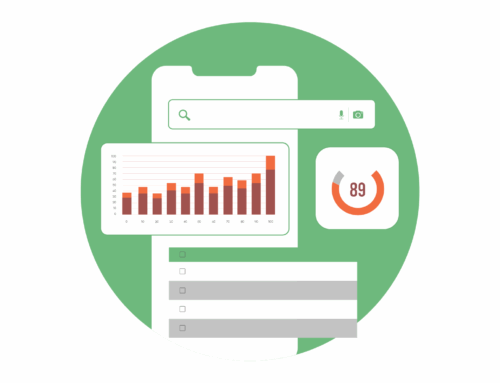Everyone talks about basic SEO tactics like backlinks, technical SEO, and content quality.
There’s a of a lot of content on the web about these topics.
But is it really enough to win the top spot in Google search results?
Clearly not!
SEO is getting more challenging with each passing year.
Gone are the days when someone could rank on Google using those basic SEO techniques.
If you want to rank your website on top of search results now, you have to start applying some advanced SEO techniques that will really boost your SEO performance and prepare you for the future.
But what are those advanced SEO tactics?
That’s what we’re going to reveal in this post.
In this post, we will show you the 9 most advanced SEO and powerful SEO techniques that work like a charm.
However, the point to be noted is that these techniques won’t magically take your website to the top of search results.
You still have to work hard to create outstanding content pieces and have to keep patience since SEO is genuinely a long-term game doesn’t matter what techniques you use.
So, ready to dive in? Let’s go.
Table of Contents
9 Advanced SEO Techniques That You Should Try in 2025
1. Focus on Topic Clusters
Topic clusters have been on the trend for the last few years in the SEO world.
But still, many people are unaware of it.
And even if some people know about it, very few actually implement it on their website.
If you don’t have any idea about topic clusters, then let me explain…
A topic cluster is basically a group of related content that links to a board content, also known as pillar content.
Pillar contents are usually highly competitive and high search volume keywords, while the topic cluster contents target a specific keyword or topic around the main pillar content.
Here’s what the topic cluster looks like visually:
Having a topic cluster-focused content structure on your website will not only massively help you to rank for competitive keywords and build a topical authority.
But it will also improve your website’s user experience, and your audience will find every answer about any topic without leaving your website.
But the question is: how will you create a topic cluster for your website?
Firstly, you have to decide what will be the core topic or keyword for your cluster.
And then enter that topic into the Zutrix keyword planner and click on “search”.
Then, it will find tons of related keywords or content ideas that you can use as a sub-topic for your cluster.
You can also use another tool like AnswerThePublic to find out some really great content ideas for your topic cluster.
Once you figure out the topics you have to cover, create a content calendar and start producing the content.
And then internally link each content piece together to support the topic clusters.
This strategy might seem complicated and tough, but if you do it correctly, it can even help you rank your website for super competitive keywords pretty quickly.
2. Steal Your Competitor’s Backlinks
One of the most complex parts of SEO is acquiring quality backlinks for the website.
It’s still one of the hardest parts of SEO because getting backlinks is not at all an easy task.
Especially if you don’t play smartly.
Most people follow the old methods and approach thousands of websites in the hope of getting backlinks.
But what if I say there’s a better way out there that will not only increase your success rate but will also save a huge chunk of your time.
And that is – stealing your competitor’s backlinks.
You don’t have to do all the hard work from scratch. Your competitors have already done the hard work for you.
Now, all you have to do is follow the same path they have created…but with a better vehicle.
What do I mean by a better vehicle?
I mean, you will target all the possible websites from where your competitors are getting backlinks, but you will follow a better strategy than your competitor and give the websites a solid reason to include your link on their site.
But before you steal your competitor’s backlinks, you must figure out who your competitors are.
And instead of assuming who your competitor is, try to follow a more data-driven approach.
Make sure all of your competitors have almost the same authority and are in the same niche.
Once you create a list of your competitors, use a backlink analysis tool like Zutrix to find out all your competitors’ backlinks.
And try to figure out what strategies your competitors might have used to get that backlink.
Is it a guest post? A mention? A roundup post?
Once you figure that out, reach out to that website with a better or reasonably similar solution.
For example, if any of your competitors got a backlink from any website with a guest post, approach that site and see if you can also contribute a post.
That’s how you can easily steal your competitor’s backlinks without wasting hours of your time.
3. Optimize Your Site For Core Web Vitals
One of the advanced SEO techniques that can take your site to the top of search results is – optimizing your site for core web vital.
In fact, with Google’s core web vital update announcement, it has become an absolute necessity to optimize websites for core web vitals.
Core web vital is a set of specific metrics that is part of Google’s page experience signal.
The core web vitals consist of the Largest Contentful Paint (LCP), First Input Delay (FID), and Cumulative Layout Shift (CLS).
All of these metrics are super crucial for a better user experience.
And with this page experience update, Google is actually trying to push sites to provide a better user experience to the users.
So, if you don’t want to get slapped by Google and lose your rankings, then you have to optimize your site for core web vitals no matter what.
You just can’t miss out on this part.
Apart from SEO, improving core web vitals will also enhance your site’s user experience and automatically improve your brand image.
You can use tools like Google page speed insights and GTMetrics to find out the core web vital score of your website.
If your website’s core web vitals score came out bad, then here are a few techniques you can use to optimize your site for it:
- Optimize and compress the images
- Use a CDN (Content delivery network)
- Eliminate render-blocking resources
- Use a powerful hosting solution
- Use lazy loading for your images and embedded videos
- Minify JavaScript and CSS files
- Reduce the use of third-party tools or plugins
Last but not least, you can also read out this detailed guide on Core web vitals where we’ve thoroughly explained everything about core web vitals and also showed in detail how you can use these strategies to improve the core web vitals score of your site.
4. Track Your SEO Performance
Whatever you’ll track…will grow.
Tracking your activity and process is not only crucial for business, but it’s super crucial for SEO as well.
As you know, SEO is a long-term game, and it might take you months and years to see results with SEO…
…Especially if you implement your SEO strategy blindly without knowing what’s working for you and what’s not.
It’s not necessary that if some SEO strategy worked for me, it will work for you as well.
That’s why you have to monitor your progress and results so that you can find out the winning SEO strategies for your website.
And once you find out those strategies, then you can double down on them to get better results.
You can use the Zutrix rank tracker to easily and efficiently track your SEO performance and keyword rankings.
It’s one of the easy-to-use rank-tracking software out there on the market, and most importantly, you can completely rely on the accuracy of this tool.
5. Smartly Internal Link Your Pages
Internal linking is not only a crucial advanced SEO technique but also a secret weapon of most of the top SEO experts.
But sadly, most people are still unaware of the power of internal linking.
If done strategically, internal linking can take your SEO to a whole new different level.
If you’re not internally linking your site, you’re missing out on a huge potential.
Internal links do not only help Google to find and crawl your pages, but they also pass the link juice of one page to another (which is the main benefit of internal links).
Getting backlinks from another website is certainly not in our hands. But internal linking the pages of our own website is completely in our hands.
If your website is currently brand new, then internal linking your pages won’t be that much of an issue.
But if you have a massive website with tons of content pieces and haven’t focused on internal links yet, then it’s going to be a huge task for you.
In that case, to save your time, you can also use an internal linking plugin link, LinkWishper, to automate your internal linking process.
But keep in mind that this plugin is only available for WordPress users.
And if your website is not based on WordPress, there’s no other way around. You have to do the whole process manually.
Last but not least, here are a few essential things you have to keep in mind to correctly internal link your pages and get the most benefit out of it:
- Do not stuff hundreds of links on a single page.
- Your internal links should look natural
- Use your primary or secondary keywords as the anchor texts
6. Steal Your Competitors Top Performing Keywords
Keyword research is not easy.
And most importantly, it’s time-consuming.
What’s even worse is that even after putting hours of time into keyword research, many people are still unable to find golden keyword ideas that will not only bring massive value to their site but also will be much less competitive at the same time.
But what if I tell you that there’s a better way of doing keyword research?
And it can save hours of your time.
Would you ever believe me?
That is – stealing your competitor’s top-performing keywords.
It’s almost similar to stealing the backlinks of your competitors.
You can use any competitor analysis tool like UberSuggest to find out the top-performing keywords of your competitors that are driving the most amount of traffic for them.
Just enter your competitor’s domain name inside the tool, and it will find out all the keywords that your competitors are currently ranking for.
Along with that, it will also show you the search volume, ranking position, and SEO difficulty of that keyword.
You can even sort the keywords based on search volume or ranking position.
Once you find out those keywords, create a spreadsheet and put everything inside that.
Now you can do this similar strategy with multiple competitors to expand your keyword list.
7. Optimize Your Title Tags For Higher CTR
Title tags are the most crucial part of search engine optimization because it’s the first thing a searcher notices before clicking on any search results.
A lower CTR (click-through rate) can potentially harm your SEO and de-rank your web pages.
If you improve your CTR rate, it will give Google a strong signal that your content is valuable and relevant to the users.
Ultimately, Google will push your web page upward in terms of search results.
With just simple tweaks and optimizations, you can improve your CTR rate by a considerable difference.
Here are a few tactics you can use to optimize your title tags for a higher CTR rate:
- Try to keep your title tag shorter than 55 characters so the entire title stays visible in the search results.
- Include numbers, years, or months in your title
- Include your primary keyword in the title tag
- Experiment with different title copies and conduct an A/B test to find out what works better
- Use power words in your title tags
- Write for actual human beings, not for Google’s algorithm, and do not stuff unnatural keywords just for the sake of adding keywords.
Conclusion
So these are the 7 best-advanced SEO techniques you can implement to rank your website even for competitive terms.
But as you know, SEO is a long-term game, and to get results, you have to be patient even if you use advanced SEO strategies.
I hope you found this post valuable. If you did, don’t forget to share it with your friends and colleagues.











